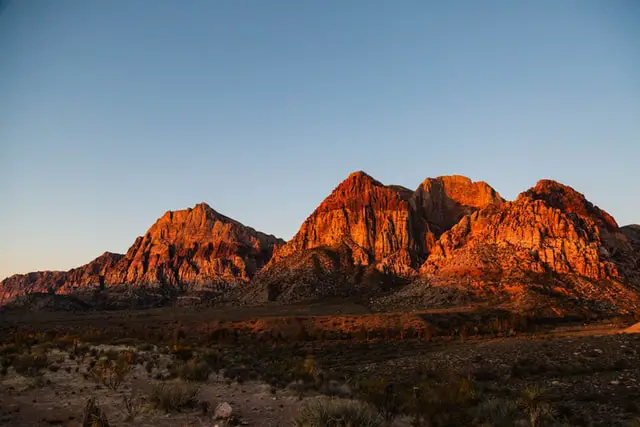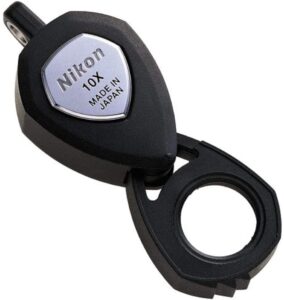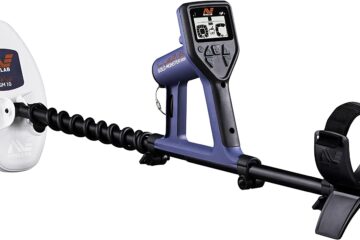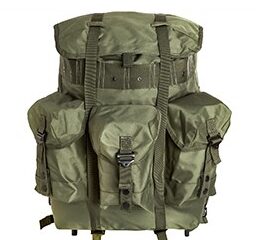9 essential prospecting hand tools
This is a listing of gold prospecting equipment hand tools for the most efficient removal of rock and ore samples. The idea here is to have a minimum number of tools that can do a maximum amount of work, while expending the least amount of energy possible.
I personally own and use all the tools below. I’ve tried many other types and makes of hand tools over the years, but these are the ones I find the most useful.
Also see the posts below to help you put together a complete prospecting setup that will serve you well in remote areas:
Gold Prospecting Equipment-Packs
First Aid Kits for exploring, prospecting and remote camping
Best Metal Detectors for Gold Prospecting
Satellite communicators, GPS messengers and personal locator beacons (coming soon)
Geological tools
First of all there are many makers of hand tools, obviously. Many are high quality, some not.
I personally carry Estwing tools and have for many years. The balance and feel is excellent.
Geologists’ hammer
Traditional prospecting and rockhounding hammers. These hammers come in various weights, the 22oz being the most popular. I like the blue impact handle over the leather, but that’s just a matter of preference.
Estwing tools are more expensive than most, but will last for many years. Sometimes you get what you pay for.
Amazon carries the 22oz here and a 22oz with a long handle here. I like to use the belt sheath to help keep pack weight down and have quick access. If you’re traveling hard and fast, taking smaller samples, this type of hammer may be the only prospecting tool you need.
Masons’ hammer
Many prospectors prefer the masons’ or bricklayers’ hammer. They have good striking force and a chisel tip. A good choice for cracking and prying rock. Amazon carries the 20oz Estwing here.
Crack hammer
The Estwing 3lb crack or drilling hammer is a short handled sledge hammer with an amazing striking force. I like the steel shanked one but the fiberglass handle model is very popular also.
For my money this hammer is an essential tool in my prospecting setup. Estwing makes a 2, 3 and 4lb crack hammer. For me the 3lb is just the right combination of weight and striking power.
Gad Pry Bar
The 18 inch Estwing Gad Pry Bar is another essential hand tool for me. Used with the Estwing 3lb crack hammer, they make for a powerful rock splitting, moving and breaking combo.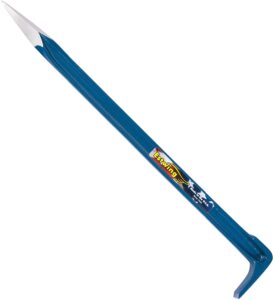
The leveraging power of the chisel end is perfect for loosening and moving larger sections of rock. The pointed end can get into small cracks and help remove seam and pocket material. Especially useful for larger scale sampling where you need to remove rock to uncover fresh ore.
Feathers and Wedges
Traditionally used for evenly splitting large blocks of quarried stone. Also for unlocking crystal pockets from pegmatites. The rock splitting force of feathers and wedges is nothing short of amazing.
Placed in line along a seam or crack in an outcrop or ledge of rock. The wedges are spaced evenly along the seam from several inches to several feet apart, depending on the length of the rock you’re trying to split. The feathers are like shims or slides for the wedges, keeping them from crushing the rock and becoming permanently wedged. 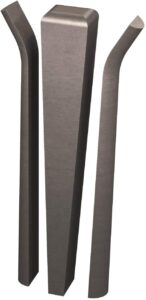
The wedges are hammered successively farther into the seam, by moving down the seam from one wedge to the next. The sound of hammer on wedge becoming more and more high pitched as more and more force is exerted.
Eventually the seam will split. Keep in mind that you have to have some open area on one side or the other for the rock to move into. Watch your toes for sure.
The more solid the rock, the better feathers and wedges work. Keep them in mind, they can sometimes work where nothing else except blasting will.
Don’t use these inside of a mine, you could easily trigger a large rock fall or collapse.
Check out the video below to see how powerful feathers and wedges are. Another great YouTube channel “Dan Hurd Prospecting” Dan has a wealth of informative videos on gold and gemstone prospecting, Hardrock and placer mining and more.
Hand drill for rock
The PETZL Rocpec drill is used for drilling anchor holes for industrial applications and for drilling holes to set rock bolts for recreational climbing. It can be used as a quick way to get the proper sized hole set for feathers and wedges. Especially when working in tough granites and the like.
Takes various sizes of standard SDS carbide bits. No tools are needed to change bits. A lot lighter and smaller than a cordless hammer drill.
Impact gloves
Impact or anti-vibration gloves can make a prospectors life quite a bit smoother. Running a hammer for several hours out of the day can take a toll. I like impact gloves and use the half finger ones. They are cooler and I can avoid taking them off when I need better dexterity.
Heavy weight sample bags
The 8 mil thick resealable poly bags are a good choice for ore samples. Don’t forget a sharpie to label your ore samples with name, number, gps coordinates or waypoint id, etc. You can also take photos showing exactly where in the ore body or outcrop each sample came from. It can be very frustrating to waste time sampling and not know exactly where a high grade sample came from. Don’t ask me how I know.
Jeweler’s loupe
Standard prospectors issue. Don’t leave home without it. Triplets are the best, I wouldn’t use anything else. The good ones aren’t cheap, but for me they are well worth the extra cost. I carry a Nikon 10x. The optics are very clear and sharp.
